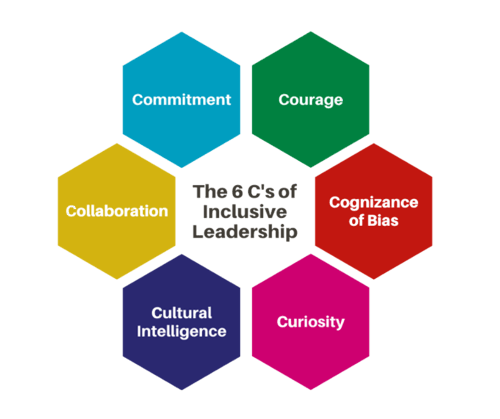What kind of a leader are you? Focus on inclusive and empathic leadership has been getting a lot of attention in recent years for valid reasons. A recent study by Catalyst, a global non-profit organization found that empathetic leadership boosts engagement at work; 76% of employees with highly empathetic senior leaders and 67% with highly empathetic managers were found to be often or always engaged at work.
The same study found that empathetic leadership leads to innovation at work, positively impacts the work-life balance of employees, and helps to foster inclusivity. All factors in improving productivity and business growth. The characteristics of these leaders provide helpful guidance in how to navigate turbulent situations and times of crisis for sure, but moreover change, transition, and organizational growth.
In a world where change is the only constant, from mergers and acquisitions to shifting office locations, and even altering coffee suppliers or software platforms, organizations must adapt to survive. Recent global events have underscored the importance of how organizations handle times of uncertainty and how leaders guide their teams through transitions.
In this article, we'll delve into the characteristics of inclusive and empathic leaders and explore how they can effectively manage and develop their employees, whether during times of transition or steady growth.
Defining Inclusive and Empathic Leadership
Before we dive into the practical applications of inclusive and empathic leadership in the business world, let's take a moment to explore the etymology of these terms.
"Inclusive" is a word that dates back to the late 1400s. Originally, it meant to "shut in" or "enclose" in the context of a group or collection. However, today, it conveys an all-encompassing and comprehensive approach. The shift in meaning reflects a change in perspective, from inward-looking to outward-looking, emphasizing the importance of welcoming a diverse array of perspectives and ideas within a group or collection.
On the other hand, "empathic" is a relatively new term, coined at the beginning of the 20th century. Its meaning has evolved less over time but is often confused with sympathy. Empathy involves understanding another person's feelings and immersing oneself in their experience, while sympathy merely expresses sorrow for another's situation. The key distinction lies in the depth of engagement: a sympathetic person observes, while an empathic person fully engages.
In the context of leadership, inclusive and empathic leaders seek to embrace as many influences and perspectives as possible and immerse themselves in the experiences of those around them. This is a profound shift in perspective, and it's not always an intuitive process.
Characteristics of an Inclusive Leader
In 2016, Deloitte Human Capital Consultants Juliet Bourke and Bernadette Dillon identified six signature traits of inclusive leadership, encapsulated in their model, "The 6 C’s of Inclusive Leadership." Through their research, they found that inclusive leaders not only embrace individual differences but can leverage them for a competitive advantage. Here are the traits, along with brief descriptions:
- Commitment: Inclusive leaders are deeply committed to championing diversity, equity, and inclusion (DEI) initiatives. This commitment aligns with their values and the values of the organization, inspiring them to work for change, fairness, respect, and resource allocation within the workplace.
- Courage: Inclusive leaders exhibit vulnerability as they challenge the status quo and invite change. They dare to speak up for inclusivity and are open about their own limitations.
- Cognizance of Bias: Inclusive leaders recognize that biases can narrow their vision and hinder objective decision-making. They make an effort to identify and address their own biases, self-regulate, and develop corrective strategies.
- Curiosity: Inclusive leaders have a natural thirst for continuous learning, which drives open-mindedness, inquiry, and empathy. They embrace different ideas and experiences, a defining characteristic of inclusive leadership.
- Culturally Intelligent: Inclusive leaders understand the impact of their own culture on their worldview and recognize how cultural stereotypes can influence their expectations of others.
- Collaborative: Inclusive leaders seek collaboration with diverse individuals, whether employees, customers, or other stakeholders. They embrace the challenges and opportunities that diversity brings.
Inclusive leaders, through their unwavering commitment, courage to challenge the status quo, and cognizance of biases, drive not only diversity but also competitive advantage. Their thirst for continuous learning, cultural intelligence, and collaborative spirit pave the way for organizations to thrive in an increasingly diverse and dynamic world.
Characteristics of an Empathic Leader
To understand the profile and mentality of an empathic leader, we turn to author and psychologist Dr. Daniel Goleman, who outlines five key elements of empathic leadership in his book "Emotional Intelligence."
- Understanding: Empathic leaders are attuned to the subtle, non-verbal emotional cues of others. This enables them to provide context for supporting and guiding others effectively and to tailor their responses and communication to meet individual needs.
- Developing Others: Empathic leaders actively work to help team members reach their full potential. They recognize accomplishments, offer constructive feedback for improvement, and provide growth opportunities by challenging employees.
- Service Orientation: Empathic leaders understand the needs of others and go out of their way to meet those needs. They give their complete focus and attention to others, whether for a brief problem resolution or a longer-term project.
- Leveraging Diversity: Empathic leaders tailor their interactions to the unique needs and feelings of those they engage with. They recognize and embrace individual differences, creating opportunities based on those distinctions.
- Political Awareness: In this context, "political awareness" refers to sensing and appropriately responding to a group's emotions and existing interactions. Empathic leaders excel at "reading the room" and responding accordingly.
What Inclusive and Empathic Leadership Looks Like
Effective inclusive and empathic leadership goes beyond just acknowledging these qualities; it requires a focused intent to put them into practice. It can be challenging to discern what this style of leadership should look like in action.
Inclusive leaders actively seek and incorporate diverse perspectives and ideas from all available sources. Highly empathic leaders excel in balancing and harmonizing the contributions of participants. Their ability to navigate change, transition, and growth shines brightest during times of crisis. Inclusive, empathic leaders approach these challenges with a humble, collaborative spirit that communicates the significance of each team member's role. During smoother times, they reinforce connections with employees, enhancing their commitment to the organization and its corporate culture.
Inclusive and empathic leadership is also valuable in the recruitment process. Leaders with these qualities seek out talent that can help their organization achieve its goals, rather than adhering to industry norms or traditional role expectations. They set aside personal biases to consider new ideas and diverse perspectives that can enhance their organization.
Practical Ways to Implement Inclusive and Empathic Leadership
Here are some practical steps to put inclusive and empathic leadership into action:
- Be intentional about checking in with team members. Go beyond asking about their work and genuinely inquire about their well-being. People want to know they are cared for, and such check-ins help reduce feelings of isolation and anxiety.
- Over-communicate when distributing information. Information is vital, and transparency is key. Even in a remote working environment, continue to proactively share thoughts, feelings, and ideas. This approach allows your team to feel valued and invites them to participate in matters important to the organization.
- Set clear and achievable goals and expectations. Employees perform better when they understand what's expected of them. Providing clarity on both the organization's direction and their own roles fosters commitment and reduces turnover.
- Show gratitude. Expressing gratitude not only promotes a healthy environment but also builds a cohesive team. Remind your team how thankful you are for their support and service, celebrate wins, and convey your appreciation in ways that are personal and meaningful.
What Kind of Leader are You?
In a rapidly changing world, the focus on inclusive and empathic leadership is not just a trend but a proven path to success. Leaders who embrace inclusivity and empathy are not only attuned to the needs of their team but actively cultivate diverse perspectives, fostering a culture of innovation and resilience. By embodying the characteristics of inclusive and empathic leadership, organizations can thrive during both times of turbulence and stability. The practical steps outlined here provide a roadmap for leaders to implement these principles, enhancing their team's well-being, fostering open communication, and promoting gratitude.
The question remains: What kind of leader will you choose to be, and how will you shape the future of your organization through inclusive and empathic leadership? Download the guide to Employment Engagement Strategies below to learn the keys to managing one of your biggest assets with positive results for your bottom line.



.png)






